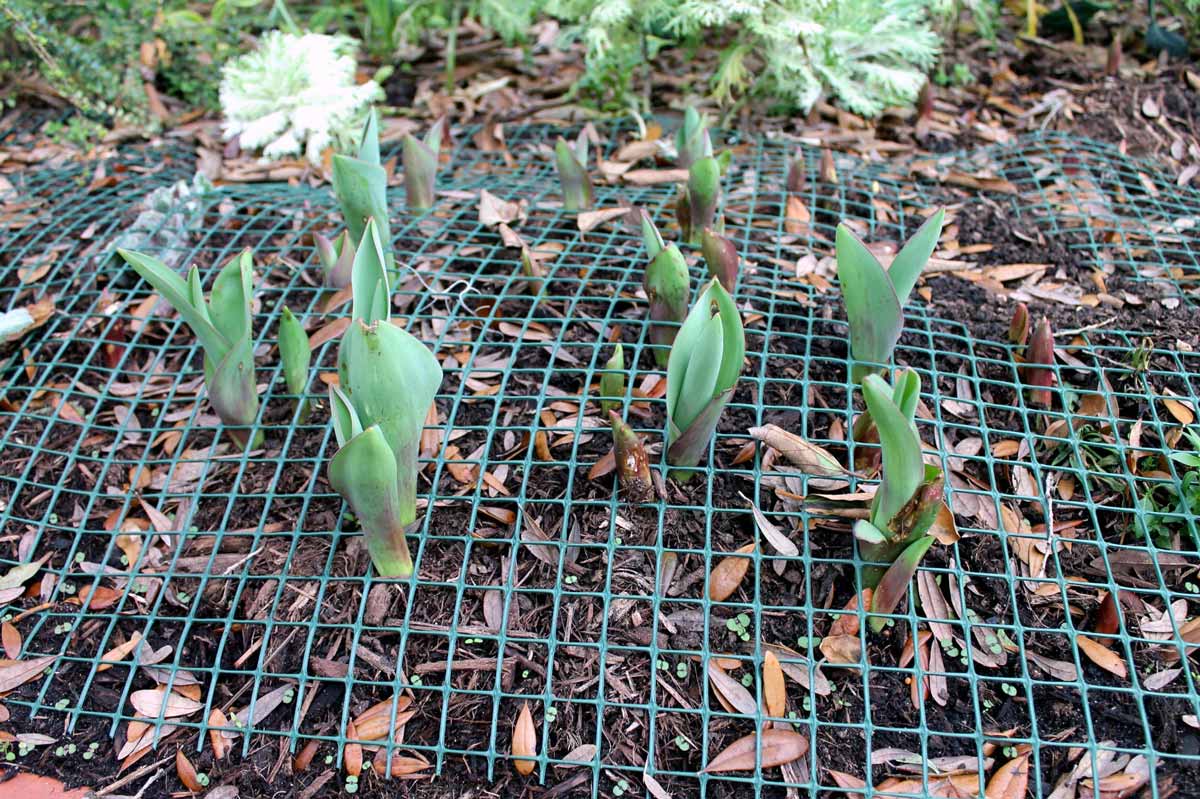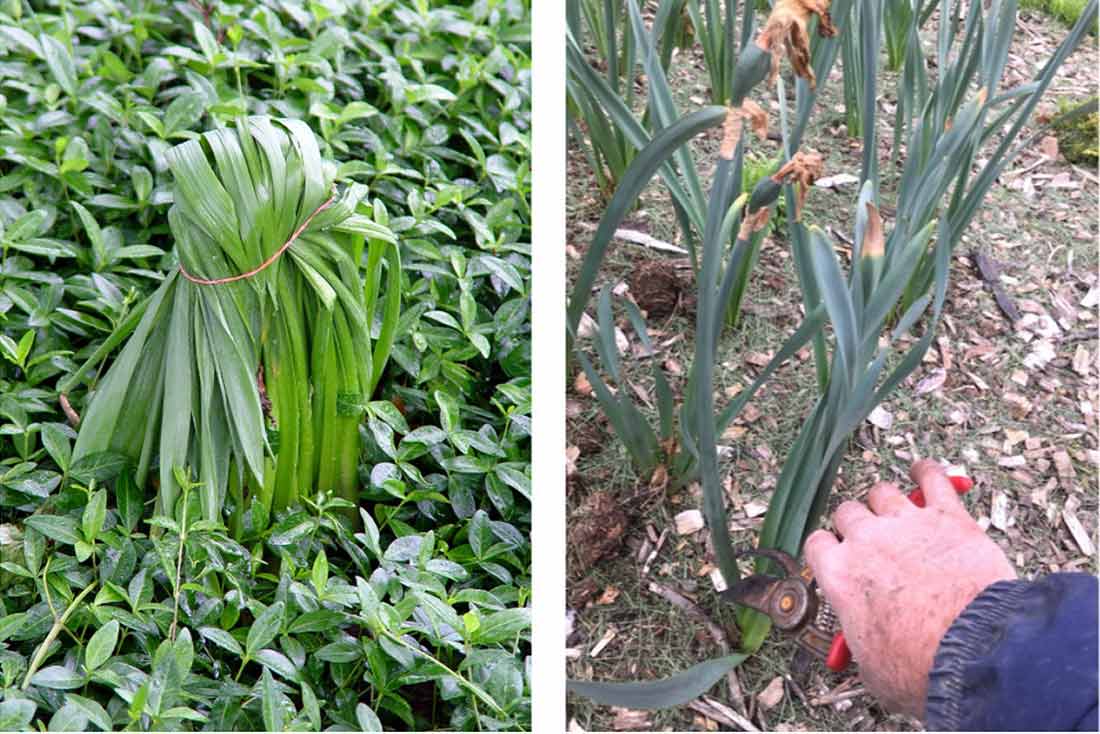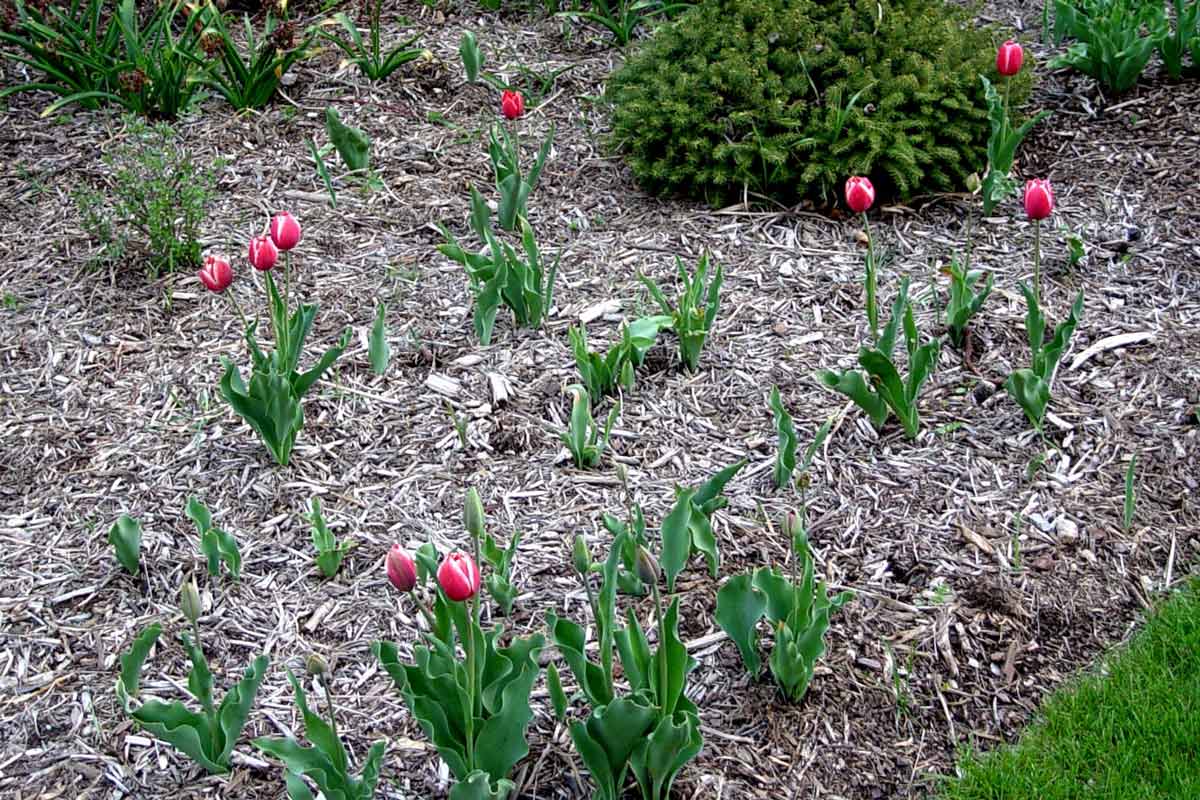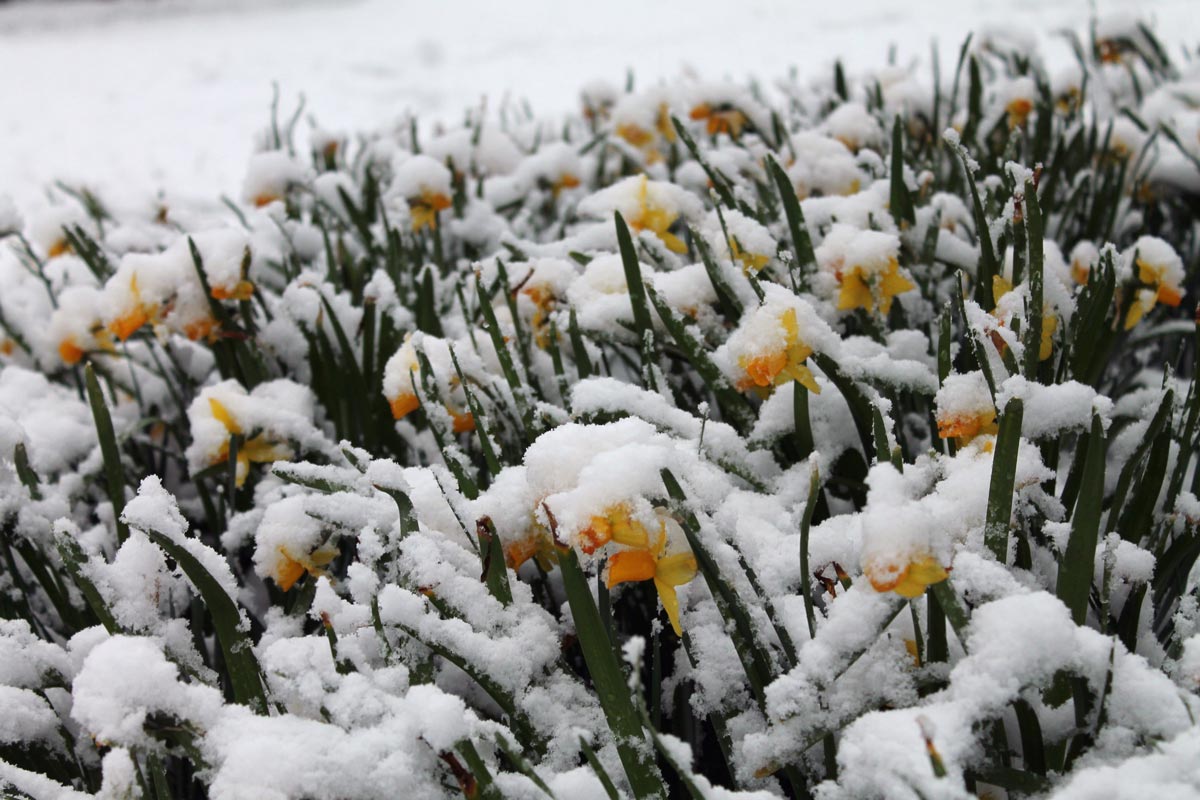How to Fill in Sparse Spring Bulb Plantings
If you discover empty spaces among your bulbs this spring, here are things you can do now to fill the spaces, plus what to plan for fall.
Spring bulbs are fairly easy to grow, but that doesn’t mean pitfalls can’t happen. The good news is that most trouble can be prevented with some know-how at planting time, which is the month of October in most of the U.S.
Five possible bulb woes and how to fix them…

Chicken wire is protecting this bed of tulips from burrowing rodents. The tulip shoots are able to emerge through the openings. George Weigel
Most puzzling is when bulbs planted in fall simply never come up in spring.
That usually traces to three explanations:
One option is to stick with species that rodents don’t like, such as daffodils, Siberian squill, ornamental onions (Allium), glory-of-the-snow, snowdrops, fritillaria, striped squill (Puschkinia), summer snowflakes, Spanish bluebells, and “Tommy” crocuses (Crocus tommasinianus).
Otherwise, discourage rodents by covering the ground after planting with a sheet of chicken-wire fencing. (Shoots will come up through the openings.) Or dig a planting trench, line the bottom and sides with fencing, plant the bulbs, backfill the soil, then lay another sheet on top to create a protected fence box.

Cutting bulb foliage before it’s mature short-circuits the bulb’s ability to recharge itself for next year’s flowering. George Weigel
Sometimes bulb shoots come up, but the plants don’t produce flowers.
Five possibilities explain most non-blooming:

This bed of tulips has fizzled out considerably just two years after it was fully planted. George Weigel
Tulips in particular often flower only one or two good years before becoming non-bloomers or dying altogether, but other species also can fizzle with age.
Sometimes the problem is over-competition – when bulbs become too crowded for the limited space and nutrients. Digging, dividing, and replanting the bulbs after the foliage dies in spring is a possible bloom restorer.
The aforementioned problems with lack of sunlight (which can happen over time from nearby growing trees) and poor nutrition also can explain this one.
If dividing and fertilizing don’t help, replace the bulbs with fresh ones.
Bulbs can grow "leggy" and flop over when they’re not getting enough sunlight or when they’re over-fertilized. Some varieties are just naturally tall and flop under the weight of rain or wet snow.
Stick with compact bulbs at planting time if you don’t like floppers (labels and catalog listings usually list height), and go easy on fertilizer (more isn’t better if plants are blooming well).
Another option is erecting "corrals" around the perimeter of flop-prone bulb groups by hammering in bamboo stakes wrapped with jute or twine.
The opposite problem is when bulbs grow abnormally short, which is usually a result of compacted soil but also can happen from too-late planting.
Bulbs planted too late often will go on to grow normally after a year of adjustment, while replanting bulbs in loosened and improved soil usually fixes soil-compaction problems.

Daffodils usually slough off cold nights and even dousings of snow. George Weigel
This is happening more and more in our increasingly erratic weather. Warm spells that follow cold spells over winter sometimes trick bulbs into thinking spring has arrived before it really has.
That causes bulb shoots to poke up prematurely, creating worries that a return of cold will kill the bulbs.
While cold can brown the tips of premature shoots, it usually doesn’t cause serious or lasting damage to the buried bulbs themselves – or even to that year’s flowers.
If you’re concerned, cover plants overnight with a sheet or floating row cover. And insulate bulb beds with about two inches of mulch heading into winter.